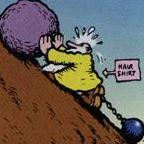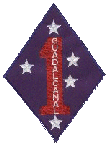Highlander
Posts: 50
Joined: 5/17/2002
From: Germany
Status: offline

|
Here is a part of a good book for you...
But I know you think you have the only good books...
ALLIED FIGHTERS: THE F4F WILDCAT
From Pages 250 to 252
Until August 1942, except for the Battle of the Coral Sea in May, USAAF and Australian pilots flying over Australia and New Guinea bore the brunt of the air war against Japan. When the Marines invaded Guadalcanal an entirely new front opened up in the Solomons. For six months Marine pilots flying from famous Henderson Field on Guadalcanal, as well as comrades in the U.S. Navy operating from Admiral Halsey’s aircraft carriers, were in the center of the storm. Fortunately for the United States during late 1942, when the entire campaign was in the balance, navy and Marine pilots had an able fighter—the Grumman F4F Wildcat.
Grumman engineers designed the Wildcat for use on aircraft carriers, a Grumman specialty. Its F3F biplane was the standard navy fighter before the war and a design influence on the Wildcat. The Wildcat, like all carrier-based planes (including the Zero), had to be built in such a way that allowed carrier pilots to cope with the difficult challenges presented by take-offs and landings on a tiny, tossing flight deck . Knowing this the Grumman designers, like their Japanese counterparts working on the Zero, gave the Wildcat great lift by situating the large wing very far forward on the fuselage. The high lift generated by the large wing area helped the pilot take off quickly and land slowly. It also made the Wildcat the most maneuverable aircraft flown by American pilots in 1942.
Like the Zero the Wildcat paid a penalty for its high lift: slower level speed. High lift, so necessary for low-speed performance, works against pure speed. The only way to compensate for this reality is to increase the power of the engine. Eventually this is what American designers did. When Grumman produced the Wildcat, however, the 1,200-horsepower Pratt and Whitney radial engine was the best available. Note that the Zero possessed even greater lift than did the Wildcat and mounted a somewhat smaller engine. The Zero, however, was nearly 1,600 pounds lighter, giving it a better power-to-weight ratio. Consequently at most altitudes the Zero was slightly faster than the Wildcat. The USN and Grumman, however, helped to even the odds somewhat by fitting the Pratt and Whitney engine with the first of what became the standard mechanically driven two-stage two-speed supercharger, thereby allowing the engine to keep its power up to a reasonable altitude. Like all the early-war fighters, however, the Wildcat was happier below 20,000 feet than above it. Although the Wildcat was nimble for a U.S. warplane, it could not match the Zero’s outstanding flight characteristics in most spheres.
Marine and Navy pilots at the time did not, in general, hold the Wildcat in very high esteem. In the carrier engagements and early in the Guadalcanal campaign they felt outclassed when confronting the Zero. In August 1942 Lieutenant Commander John Thach, a hero at Midway and famous tactician, told his superiors:
In connection with the performance of the Zero fighter, any success we had against the Zero is not due to performance of the airplane we fly but is the result of the comparatively poor marksmanship on the part of the Japanese, stupid mistakes made by a few of their pilots and superior marksmanship and teamwork on the part of some of our pilots. This deficiency not only prevents our fighter [the F4F—EB] from properly carrying out its mission but it has had an alarming effect on the morale of the fighter pilots in the Fleet at this time and on those who are going to be sent to the Fleet.
J.A.O. Stub, a pilot with the Marine squadron VMF 121 on Guadalcanal, recalls a pep talk given by one the famous leaders of the Cactus Air Force, Lieutenant Colonel Joe Bauer: “Bauer was a splendid leader and pilot. When comparing the Zero with the F4F, Bauer said, ‘A Zero can go faster than you can, it climb faster than you can, and it can outmaneuver you. Aside from those things, you’ve got a better airplane.’” Yet in time the Wildcat showed some very formidable features. For carrier use the F4F was extremely stable, thus keeping down the accidental losses that plagued carrier operations. Interesting testimony on this comes from John Herbert, a British pilot who flew off of HMS Victorious. In early 1943 the Royal Navy agreed to lend Victorious to Admiral Halsey in the South Pacific so the battle-scarred Enterprise could receive a full refit on the West Coast. By this time Fleet Air Arm was largely equipped with F4Fs, which it called the "Martlet."
RETURN TO BOOK EXCERPTS ON FIGHTERS PAGE
RETURN TO THE FIRE IN THE SKY HOME PAGE
|
 Printable Version
Printable Version







 New Messages
New Messages No New Messages
No New Messages Hot Topic w/ New Messages
Hot Topic w/ New Messages Hot Topic w/o New Messages
Hot Topic w/o New Messages Locked w/ New Messages
Locked w/ New Messages Locked w/o New Messages
Locked w/o New Messages Post New Thread
Post New Thread